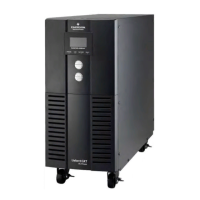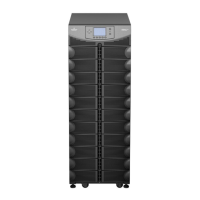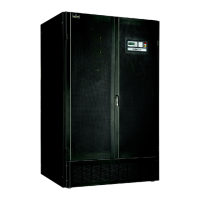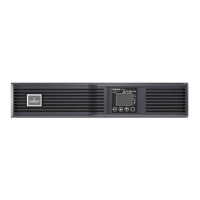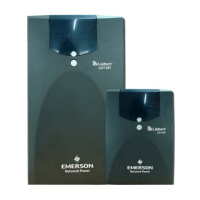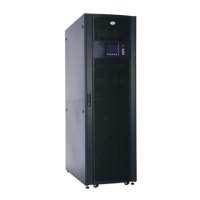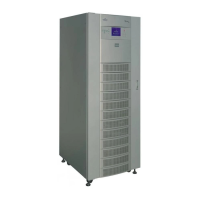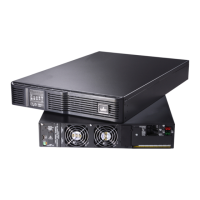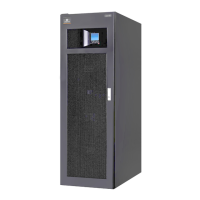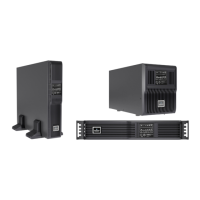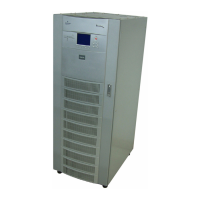Do you have a question about the Emerson Liebert HiPulse E Series and is the answer not in the manual?
| Model | Liebert HiPulse E Series |
|---|---|
| Product Type | UPS |
| Topology | Double Conversion Online |
| Frequency | 50/60 Hz |
| Power Rating | 10 kVA - 80 kVA |
| Battery Type | Valve Regulated Lead Acid (VRLA) |
| Communication Ports | RS-232, USB, SNMP |
| Operating Temperature | 0°C to 40°C (32°F to 104°F) |
| Humidity | 0-95% non-condensing |
| Dimensions | Varies by model. See product documentation. |
| Weight | Varies by model. See product documentation. |
Describes the system for communication between UPSs/MSS and BMS using MODBUS/JBUS RTU protocol.
Details the display and control panel on the UPS, monitoring state, electrical measurements, and messages.
Explains the central logic board handling communication, data backup, and clock functions for Modbus.
Locates the Operator Logic board inside the UPS/MSS access door and its connection to BMS via RS485.
Details the 3-way X4 connector for Modbus network connection and RS-485 cable requirements.
Explains how to establish a multipoint RS-485 serial line connection for multiple UPSs.
Describes the Operator Panel display and the function of individual keys used for programming.
Guides through selecting JBUS/MODBUS protocols and configuring parameters via the Operator Panel menu.
Details the implementation of MODBUS/JBUS RTU protocol managed by Siemens microcontroller via RS485.
Outlines hardware specifications for the communication protocol, including speed, data bits, stop bits, and parity.
Explains software aspects, including the panel acting as a slave and limitations of MODBUS/JBUS RTU.
Explains the CRC (Cyclical Redundancy Check) calculation procedure for MODBUS RTU protocol.
Details data formatting notes for HEX, HEX NIBBLE, and ASCII formats used in communication.
Lists requests and commands that can be entered via the Operator Panel, specifying syntax and response.
Describes the 'PANEL CONFIGURATION REQUEST' command for reading system configuration.
Provides notes on UPS/MSS Power Setting, Configuration Parameter, Status, and Alarm Status.
Explains the command to read the current time on the UPS/MSS.
Explains the command to read the current date on the UPS/MSS.
Details alarm status, providing addresses, meanings, size, resolution, and format for various alarms.
Provides notes on UPS status, alarms 0-15 and 16-31, and alarm correspondence.
Lists commands to read current UPS/MSS status in terms of electrical quantities.
Explains notes on measurements, including transformed values, insignificant values, and measurements not present on MSS.
Details programming parameters, including address, meaning, size, range, resolution, and format.
Provides notes on rotating values for voltage, frequency, slew rate, and UPS power.
Describes commands to read messages stored in Event-History records.
Provides notes on UPS status, MSS status, alarm type, and measurements for event history.
Details commands for manipulating the Alarm History, such as setting pointers or erasing the buffer.
Lists commands to control machine functions like inverter, rectifier, mains, battery test, and alarm reset.
Covers commands for setting and reading UPS/MSS date and time.
Details commands for setting the UPS/MSS time (Hour, Minutes, Seconds).
Details commands for setting the UPS/MSS date (Day, Month, Year).
Explains the format of error response messages, including error codes and their meanings.
Provides a comprehensive map of JBUS/MODBUS RTU addresses for various parameters, functions, and measurements.
